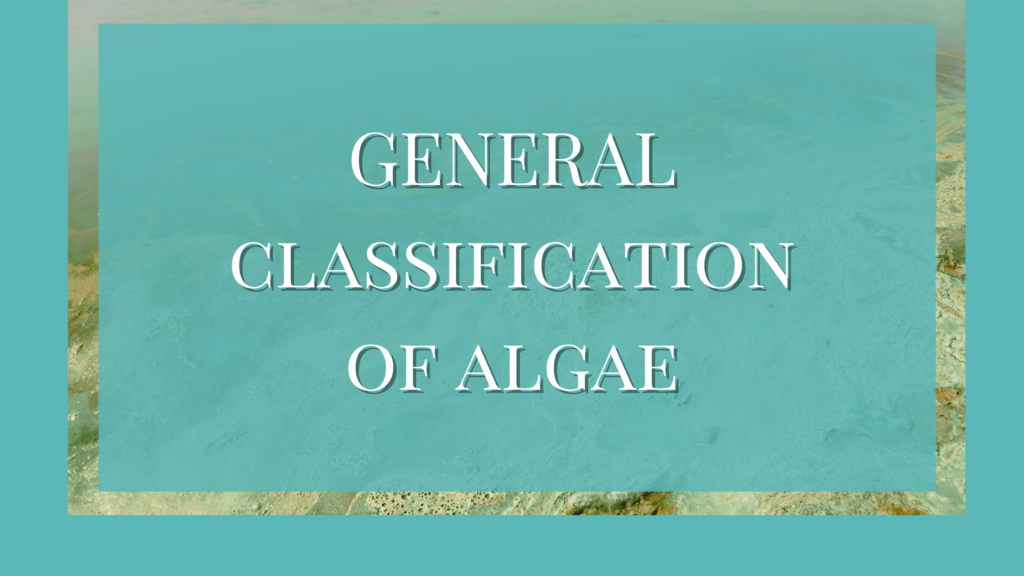There are different schools of thought regarding the classification of algae. Algae were classified and reclassified several times in various patterns until they reached the currently accepted group of 11 classes.
The first classification was done by the Swedish botanist Carolous Linnaeus, who proposed 14 algal genera. Among these only four genera, Chara, Conferva, Fucus, and Ulva are a part of the modern classification system.
If you check the history of Phycolcogy, it was Linnaeus (1754) who coined the term ‘Algae’ for a group of plants. His group considered a mixture of algae and Hepaticae. Lewin and Gibbs (1982) define algae as “organisms that have virtually no common features which would indicate phylogenetic homogeneity.”
However, most modern phycologists accept the definition of Fritsch (1935) for the term algae which states that the designation of an alga must involve all holophytic organisms that fail to reach the level of differentiation of archegoniate plants.
The algae thus constitute a heterogeneous assemblage of oxygen-producing photosynthetic, non-vascular organisms with unprotected reproductive structures (South and Whittick, 1987). Except for Charophyceae, the algae are distinguished from the Bryophytes by their lack of multicellular sex organs contained within sterile jackets of cells and by their lack of retention of the sporophyte within the female organ (Silva, 1982).
Harvey (1836) was the first to do the classification of algae into four major divisions based primarily on color (Green- Chloropspermeae; Brown- Melanospermeae; Red- Phodospermae; Diatoms). Since then different algae classifications have been proposed with the recognition of more classes.
Basis of Classification of Algae
A continuous stream of new information on the cell structure of algae and their biochemistry is stimulating new approaches to the classification of algae. Factors that contribute to difficulties of classification include
- The evident polyphyletic origins of the algae
- The seemingly poor fossil record for most groups
- The tendency to make wide-ranging conclusions based on an examination of a relatively small number of species
Nevertheless, a natural classification of algae that reflects true relationships must necessarily take into account all possible criteria. These criteria include,
- Flagellar organization (number, relative lengths, details of appendages, basal body structures, etc)
- Photosynthetic pigmentation in algae (presence or absence of relative amounts of chlorophylls, carotenoids, and biliproteins)
- Surface coverings (structure, chemistry, and origin of cell walls, scales, periplasts, pellicles, envelopes, and cysts)
- Food reserves (chemistry, structure, and site of origin of starches, β-1-3-glucans, other polysaccharides, lipids, and proteins)
- Genetic material (presence or absence of nucleus, organization, and chemistry of chromosomes, patterns or mitosis, meiosis, etc)
- Ultrastructure of chloroplasts, nuclei, nuclear division, mitochondria, Golgi bodies, ER, and other cellular components)
- Cytochrome c data, cell symmetry
- Details of reproduction (asexual, sexual isogamous, anisogamous, oogamous, etc)
- Habitat of algae: Morphological status (flagellate, coccoid, unicellular, colony, simple filament, branched filament, heterotrichous filament, pseudo parenchymatous or the parenchymatous thallus)
In almost all systems of classification of algae, a single character is considered first as the starting point to group the algae into various divisions. In recent treatments, this single character that fits in best with the rest of the characters is the flagellar organization—classifying the algae by flagellar character and fitting in combinations of other taxonomic criteria around. This main basis produces what appear to be the most natural groupings.
In recent times, there have been more attempts at the natural classification of algae based on various characteristics. These classifications used characteristics of algae such as
- Type and properties of pigments.
- Chemical composition of reserve food material
- Assimilatory products that are used for photosynthesis.
- Morphology, type, insertion point, and the number of flagella.
- The thallus organization of algae and cell structure
- Morphology of thallus
- Life cycle pattern
- Type of reproduction and reproductive structure
Nomenclature of Algae
Papenfuss (1946) suggested that the names of algal divisions include ‘Phyco’ (from the Greek phycos which means seaweed, hence Alga) and hence the group names being accordingly Chlorophycophyta, Euglenophycophyta, etc.
Classification of algae below the level of class progresses in similarities between the taxa and becomes greater with progression to the lower levels of classification. The endings of names of the taxonomic ranks are consistent and follow rules that are strictly applied according to the ICBN, International Code of Botanical Nomenclature (Voss, 1983).
- Division
- Class/Subclass
- Order
- Family
- Genus
- Species
Algae has specific suffixes, recommended by the ICBN for their classification. There is ‘phyta’ for the Division, ‘phyceae’ for the class, ‘phycideae’ for subclass, ‘ales’ for the order, ‘innales’ for the sub-order, ‘aceae’ for the family, and ‘oideae’ for the sub-family The genus name is denoted in Greek and the species in Latin.
References
- R. G. South and A. Whittick, “Introduction to Phycology,” Blackwell Scientific Publications, Oxford, London, 1987.
- Baweja, Pooja & Sahoo, Dinabandhu. (2015). Classification of Algae. 10.1007/978-94-017-7321-8_2.




